Air Tightness, or a lack of air tightness, can contribute up to 35% of the cost of your heating bill during an average British winter period. By reducing the air leakage (the amount of warm air escaping), you can save money.
With the average winter bill expected to hit £2000 this winter, ATTMA has compiled a list of 10 small things you can do in your home to reduce air leakage, each costing less than £10, each expected to have a payback period equal to, or less than one winter season of heating. Spending £100 could save you well over £100 each year, often much more, while also improving your comfort and your carbon footprint.
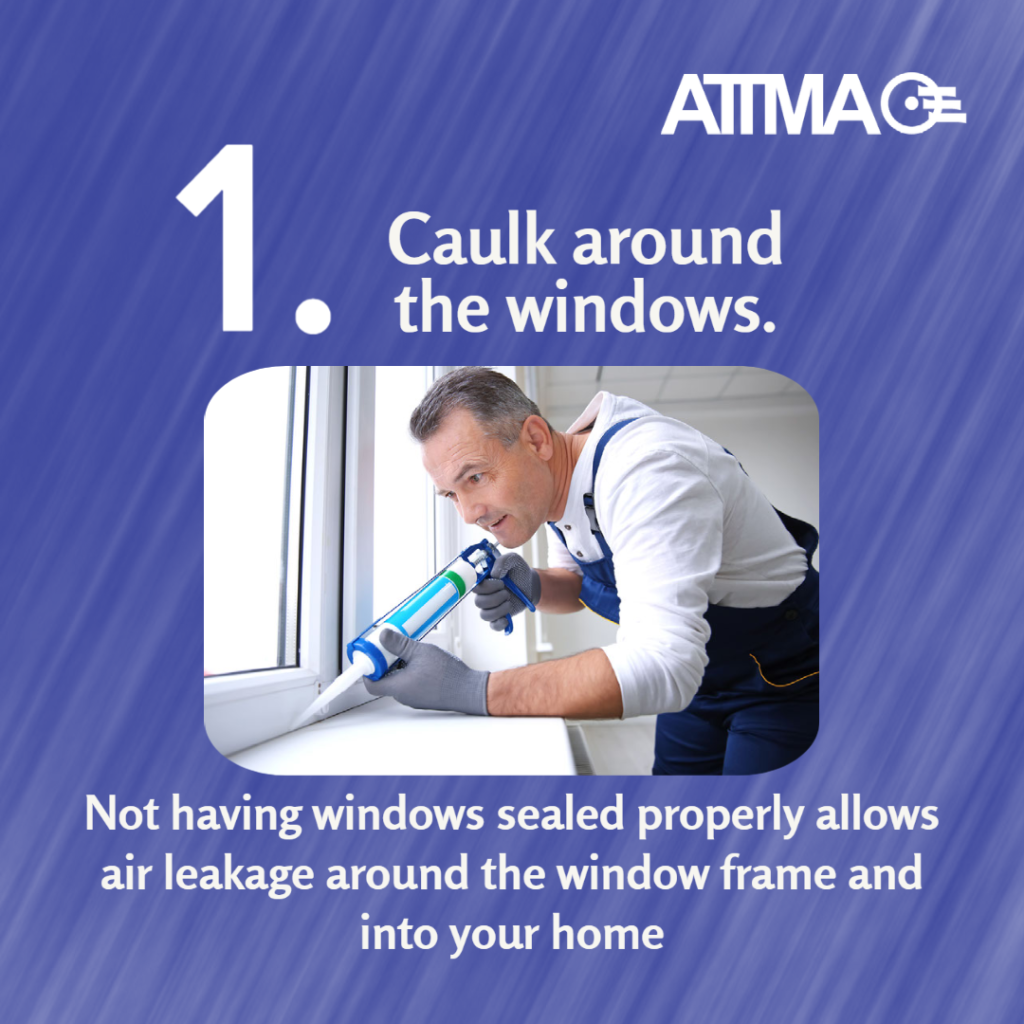
Caulk around the windows
Not having the windows sealed properly allows air leakage around the window frame and into your home. This small leak is exaggerated when the wind is blowing directly into the façade the window is installed on, blowing cold air directly into the room, whilst sucking the warm air out of the other side.
A simple decorators caulk is all that is needed. Don’t use silicone as this won’t take paint when you come to decorate.
Cost* – £1.19 for caulk, £7.49 for a sealant gun if you don’t have one already – Total – £8.68 all together.
Adjust your doors to ensure seals meet.
Adjusting your doors and windows often won’t cost a penny. Over time, doors and windows may need adjusting to ensure they meet tightly on the seals. More often that not, a simple allen key is all that is needed to ensure a tight seal.
Cost* – £4.99 for a 10 piece set
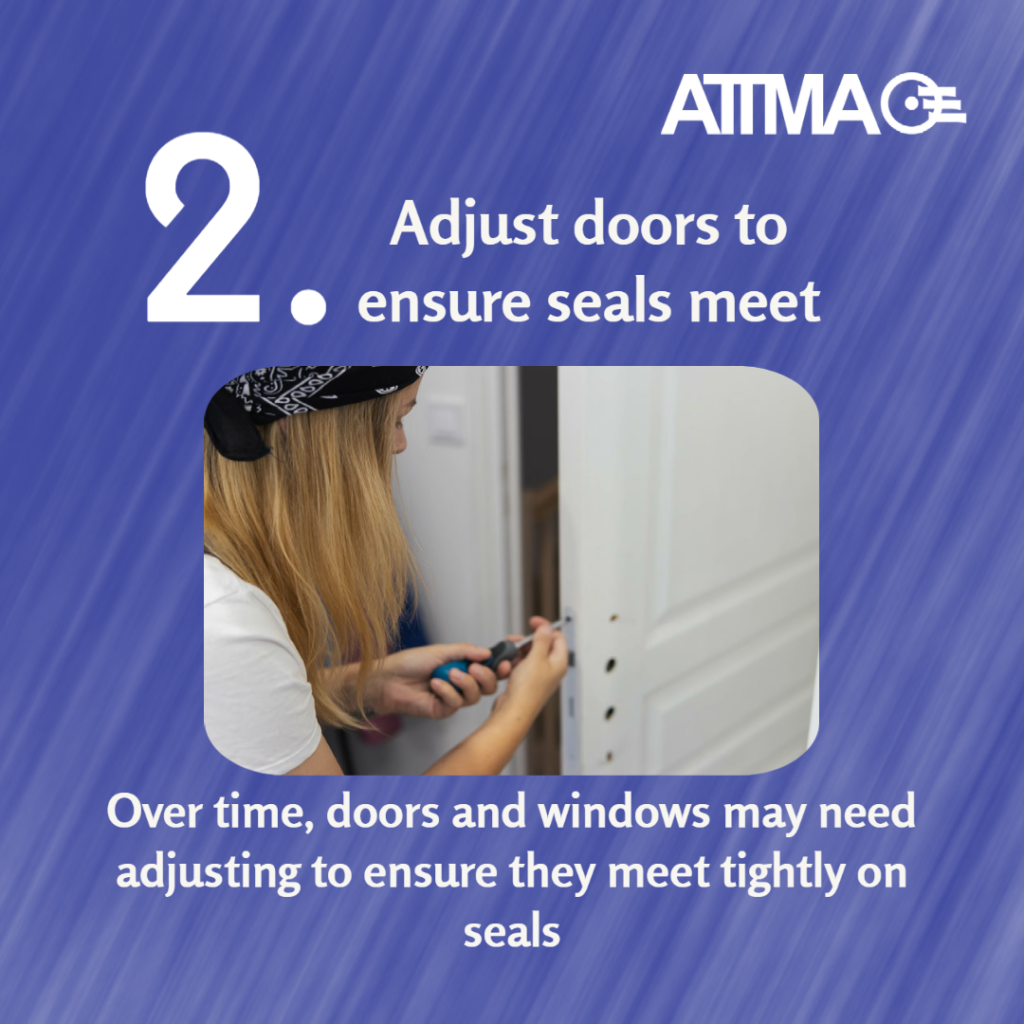
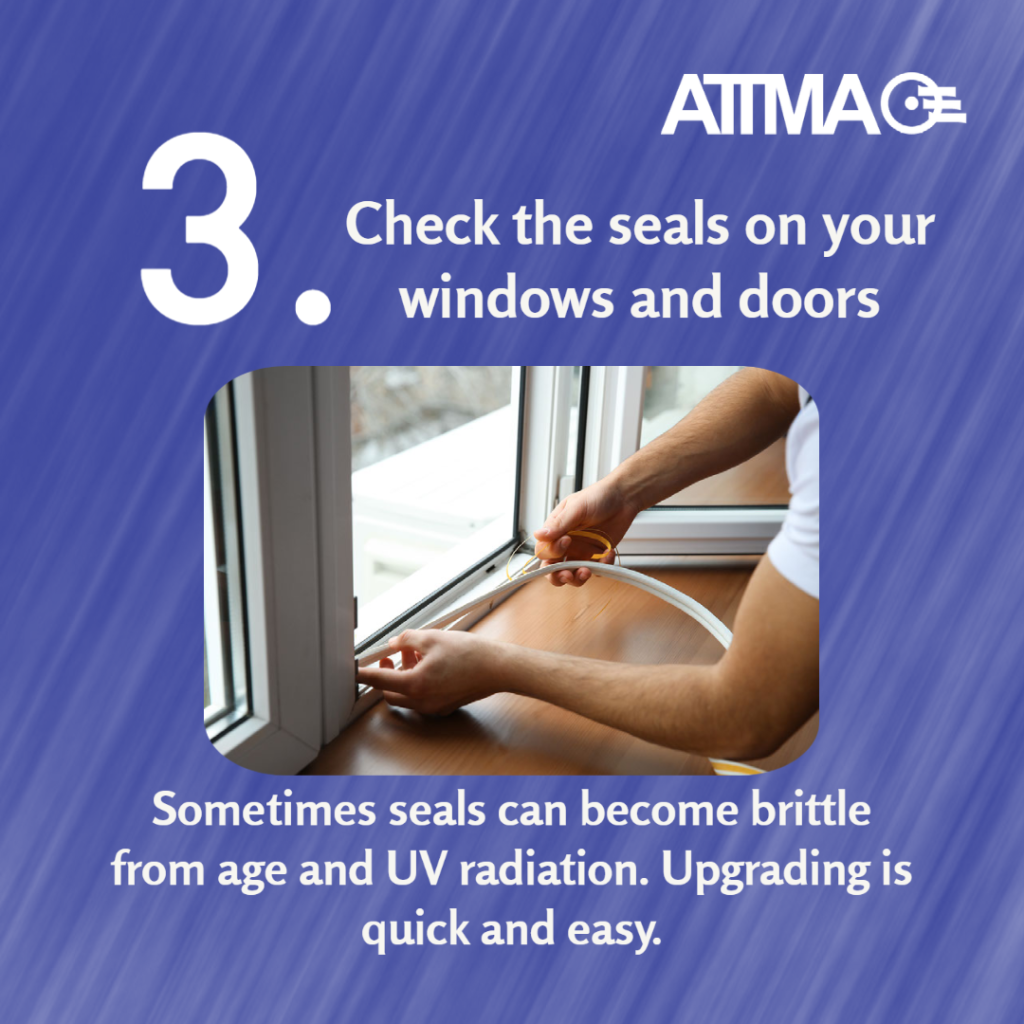
Check the seals on your windows and doors
You may find though you’re your doors and windows have corroded seals which will leak lots of your warm air directly to outside. Sometimes the seals can become brittle from age and UV radiation.
Upgrading your seals is quick and easy, Purchase the replacement seals, once you have confirmed they are the correct type, remove the old seals and replace with some shiny new ones.
Note – you should not remove anything from a door which is considered to be a fire door. This includes any front door into a corridor of apartments. If this is the case, add additional seals but do not amend the existing seals as these may be there for fire.
Cost* – £4.99 for 5m of seal.
Fill in holes in the ceiling!
Warm air rises and will find its way out of your home through gaps and cracks in the ceiling, particularly on the highest floor of your house.
Get the filler out, fill in those old holes, patch up those downlights and stop that expensive warm air flowing into your attic!
A 500ml tub of lightweight filler and an old library card is all you will need.
Cost* – £7.99 for 500ml.
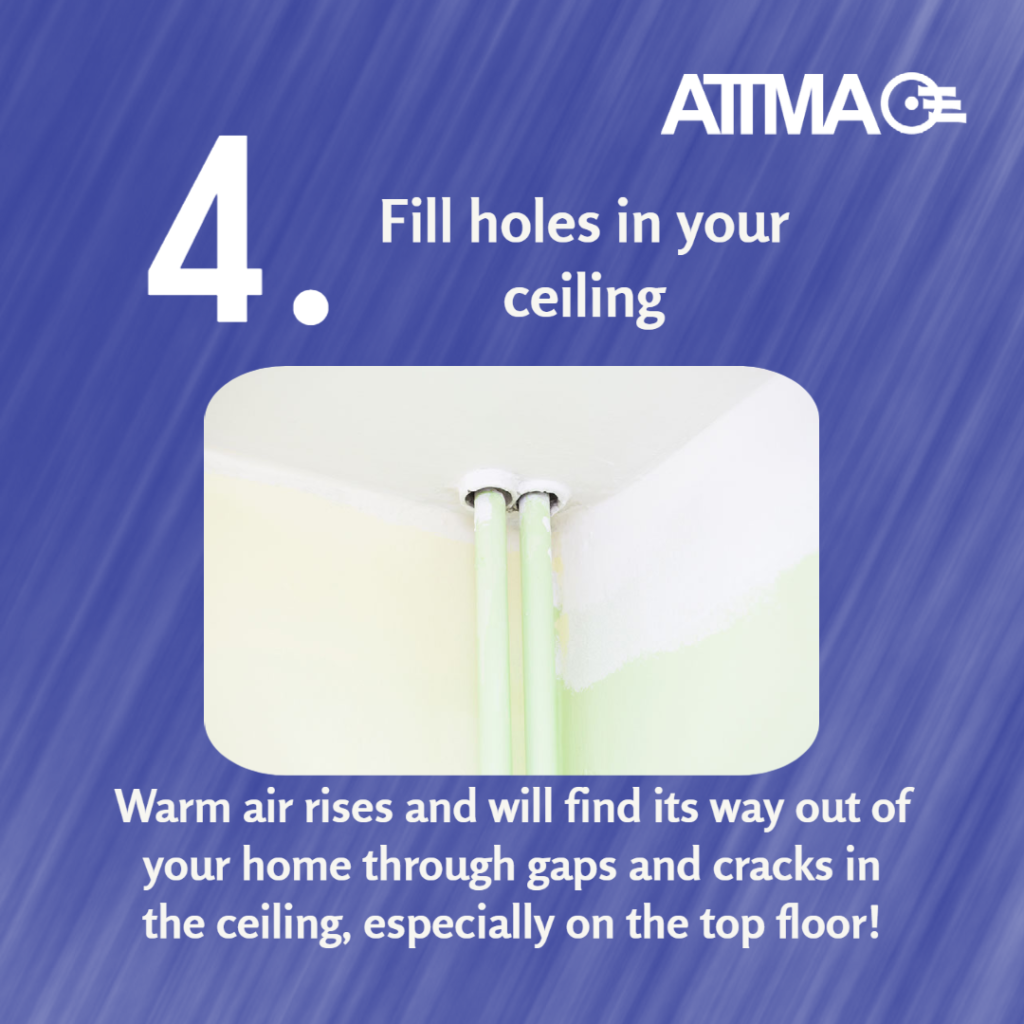
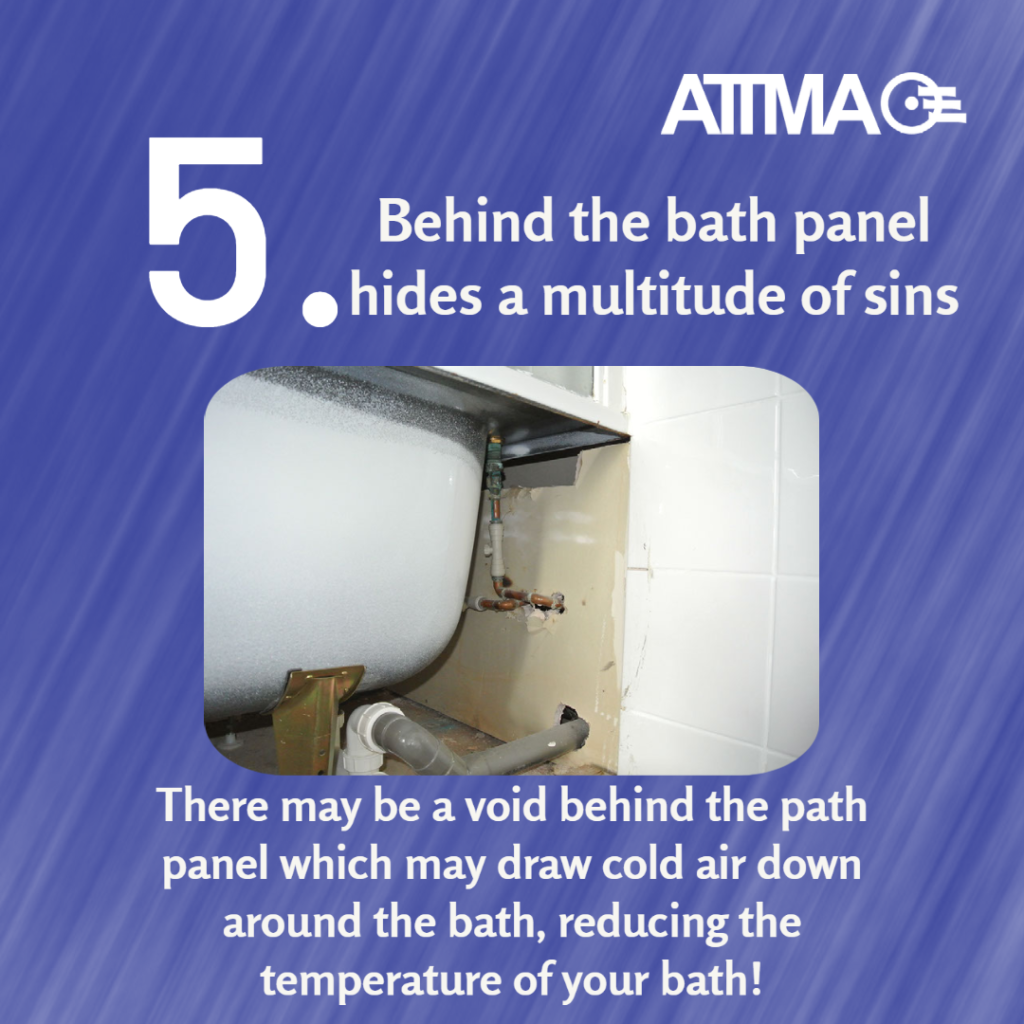
Behind the bath panel hides a multitude of sins.
Behind the bath panel you may find there is a void which heads up to the attic, which in turn will draw cold air down around the bath, reducing the temperature of your bath!
Get this area blocked up with a scrap of plasterboard (if the hole is large) and some expanding foam!
Cost* – £7.49 for 750ml and some plasterboard from a building site (though be sure to ask first!!)
Gaps around heating and water pipes
Its not uncommon to find that when your heating system was installed, large gaps were left around the pipes where the hole drilled was substantially bigger than the hole needed. These holes allow warm air out and cold air in, reducing the effectiveness of hot water cylinders and central heating systems.
Fill these holes with an expanding foam (ensure the expanding foam is ok to be used on the type of pipe – never use products on sprinkler pipes!), or use pipe insulation to fill the hole. You can cut insulation pipe with a knife. A 1m length can go far!
Cost* – £0.94 for 1m of pipe insulation
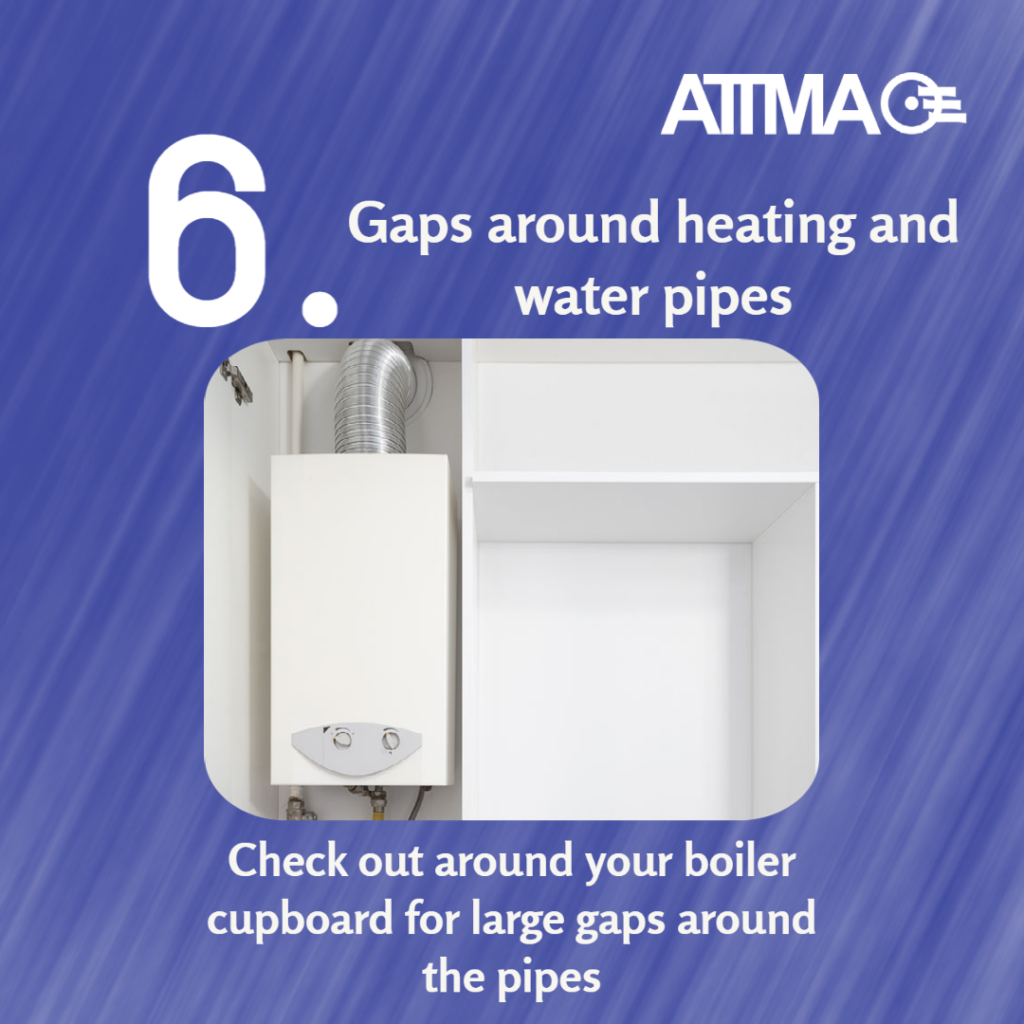
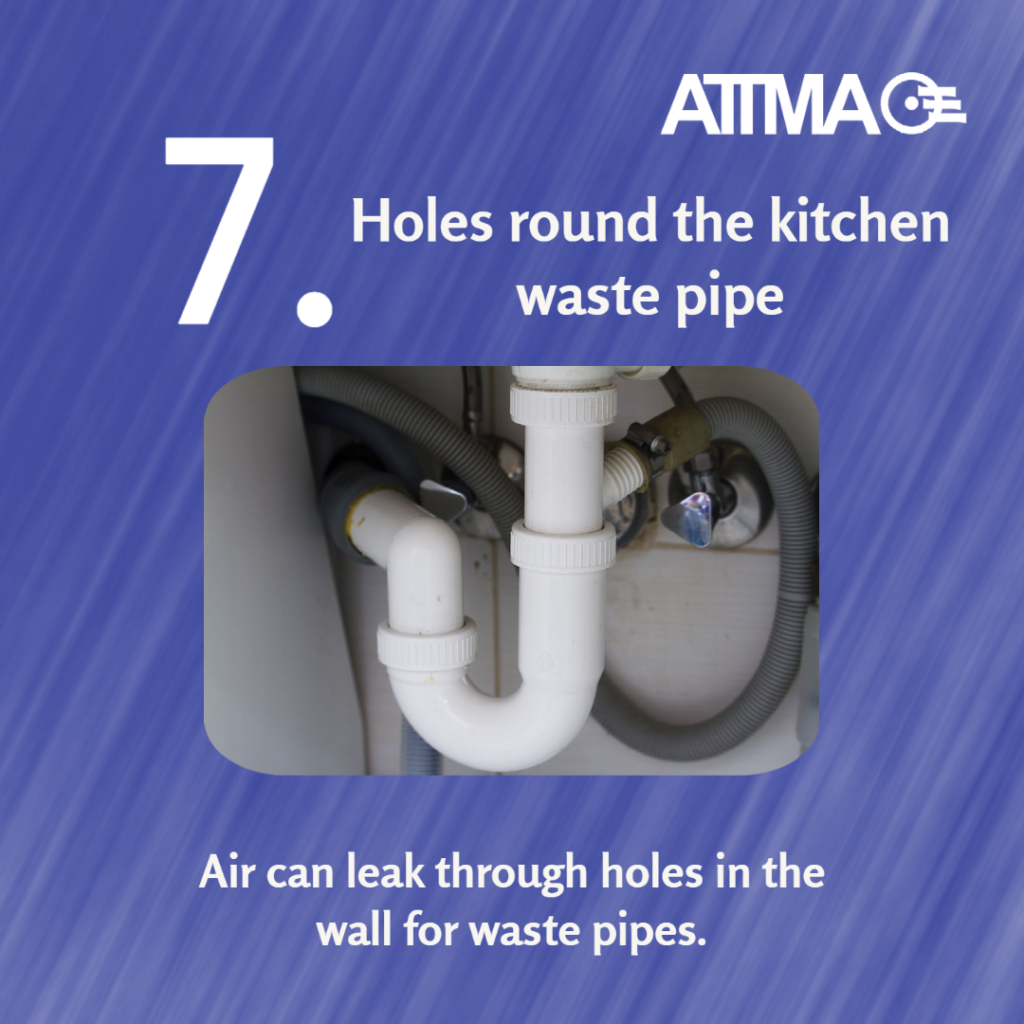
Holes around your kitchen waste pipe
Another big source of air leakage is holes in the wall for waste pipes. Sometimes these are not accessible but where they are a simple PipeSnug can be used to block the hole. Simply unscrew the waste pipe, add your pipesnug and re-assemble. Your air leakage is now reduced!
Cost* – £3.19 to £4.78 for 2, depending on size.
Sealing the bottom of your walls
This one is a very common source of air leakage for homes built using modern plasterboard techniques.
Plasterboard is added to the walls, leaving the bottom around an inch short. This expansion gap is covered with skirting boards but leaves a big source of air leakage in the home. This is often worse where hardwood or laminate flooring is installed. The problem will exist where carpets are installed (ever noticed the edges are discoloured? Yes, this is dirty air coming into your home being filtered by the edges your carpet!) but is harder to fix.
Seal up the gap beneath your skirting board and the floor using a flexible silicone. Cut a small hole in the end of the sealant tube and fill this area for a noticeable improvement in air tightness!
Cost* – £1.19 for caulk, £7.49 for a sealant gun if you don’t already own one!
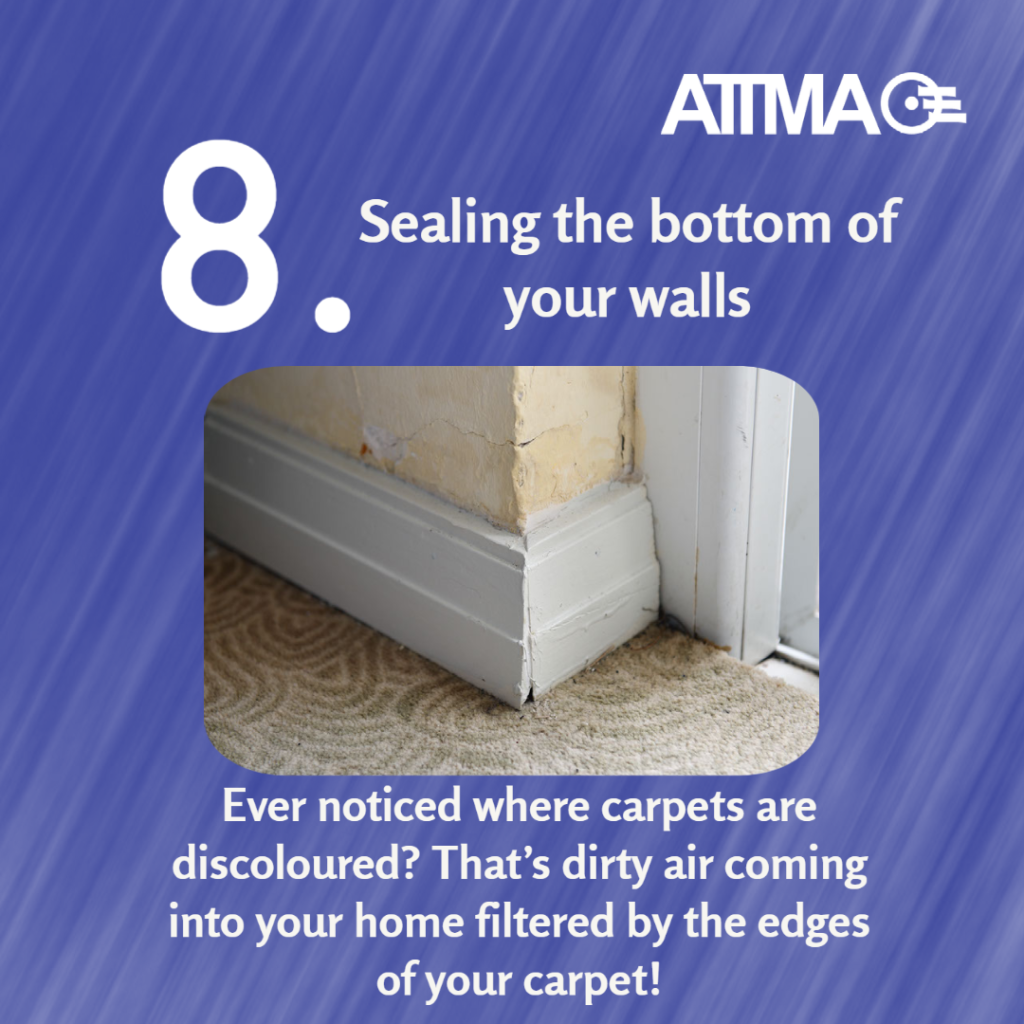
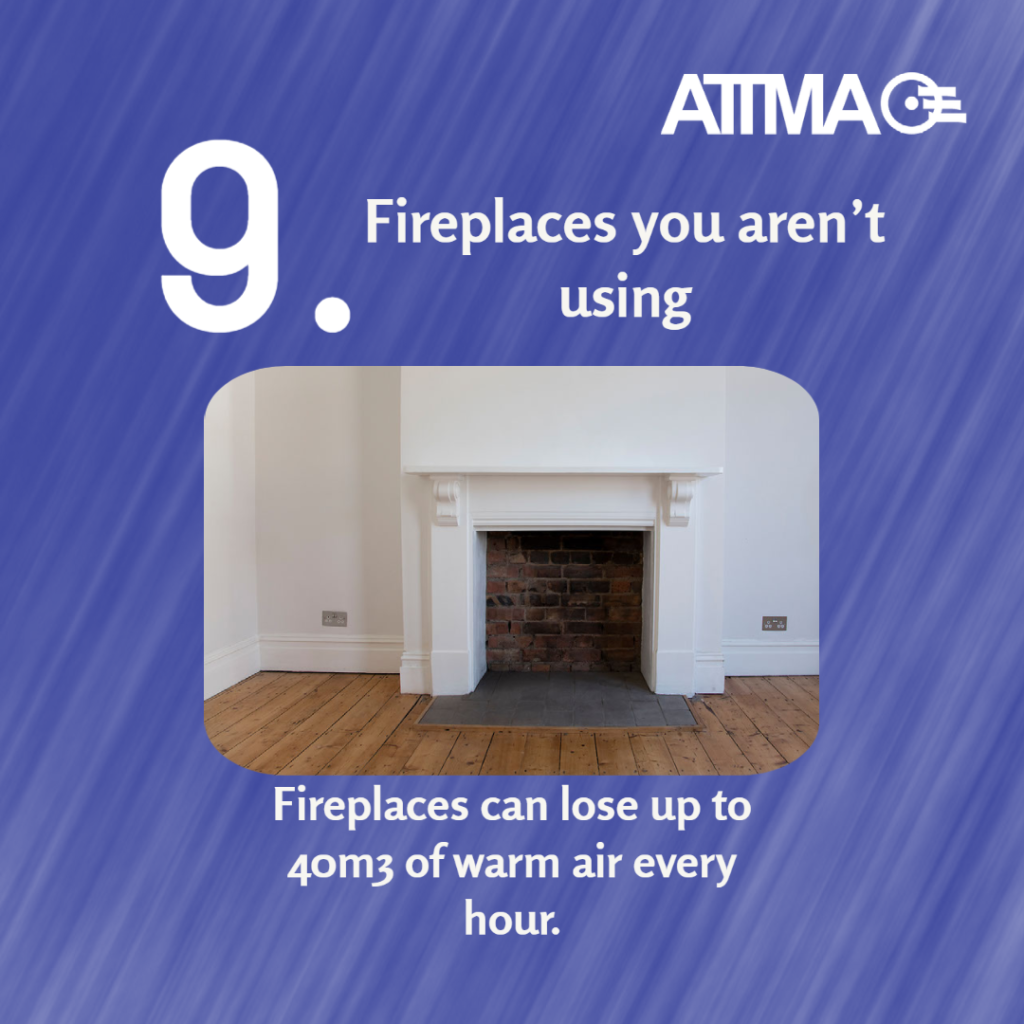
Fireplaces you aren’t using?
Fireplaces can lose up to 40m3 of warm air every hour. This is normally the equivalent to ALL of the air in the room going up the chimney and having to be replaced by keeping the radiators on.
Blocking the chimney is easy to do and there are lots of great products on the market to do this.
You can do it yourself using an old pillow or cushion wrapped in a couple of bin bags and pushing this into the chimney.
However, if you can afford it, we like the Chimella. It’s a little pricier so but is more secure, more airtight and will catch any debris. We’re mentioning it here as a pricier alternative!
Cost* – Bin Bags from your own supply, Old cushion from a charity shop (£3-£6).
Is your kitchen cooker hood hiding a big hole?
A hole is needed (unless you have a recycling cooker hood) for the pipe to run through, but this is often cut substantially oversized for the pipe needed.
Once the cooker hood cover goes on, you won’t see the excess-sized hole.
Pop your cooker hood cover off (most times these just lift off) and check if you have this problem, if so, you’ll need to patch the area around the pipe. You’ll need to plasterers’ tape and some filler. Your old library card also comes in handy again!
Cost* – £4.29 for plasterers tape, £3.98 for filler
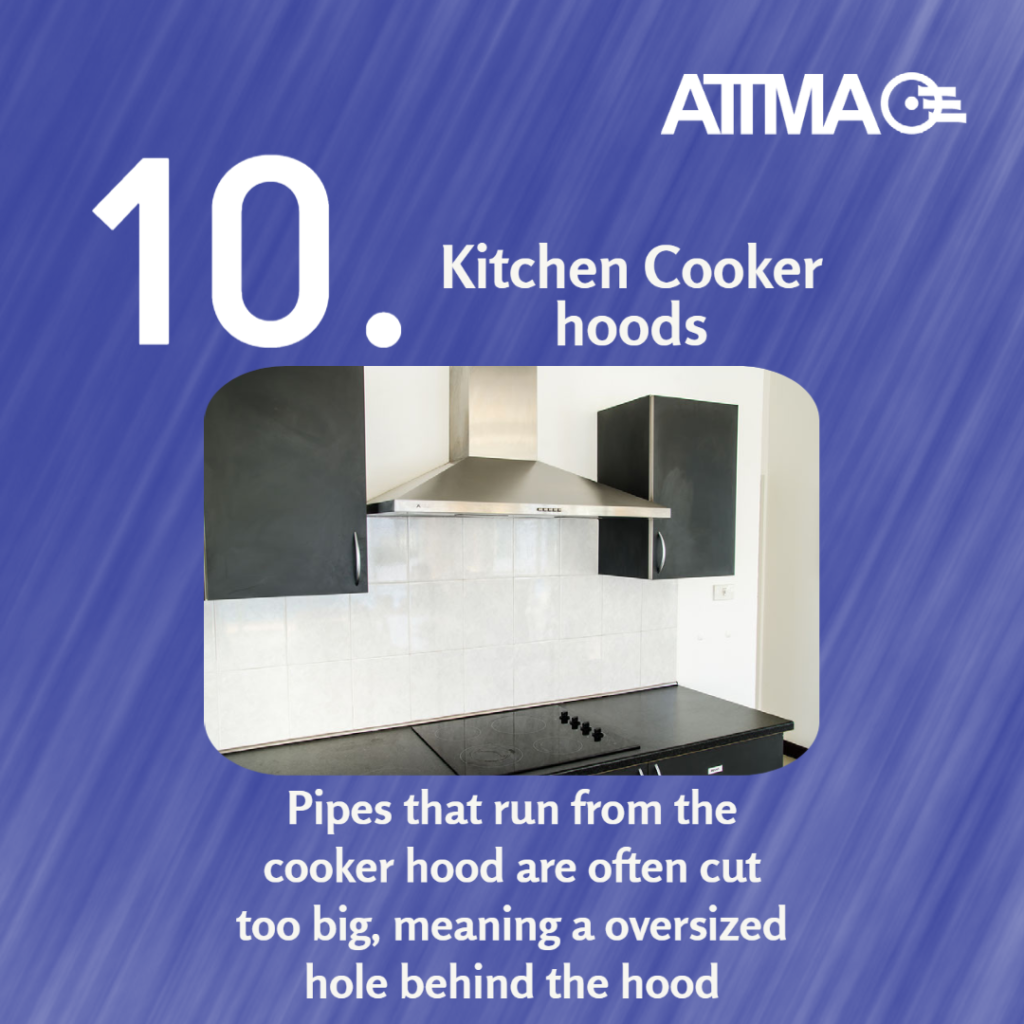
*Prices correct as of October 2022





